The Business Empire That Ruled for Centuries
The Mediterranean Sea became Rome’s private highway for nearly 600 years, transforming what began as a modest republic into history’s most sophisticated commercial empire. While most discussions of Rome focus on military conquest or architectural marvels, the true genius of Roman domination lay in something far more subtle yet profoundly influential: their revolutionary business model.
Rome operated much like today’s multinational conglomerates, creating a commercial ecosystem that generated enormous wealth through maritime trade networks stretching from Britain to India. Their business strategies—managing complex supply chains, developing financial instruments, and executing market expansion—created the foundation for commercial practices we consider modern innovations.
When we examine Rome’s maritime empire through a business lens, something remarkable emerges. The Romans weren’t just conquerors—they were visionary entrepreneurs who understood market forces, consumer psychology, and strategic growth with astonishing sophistication. Their commercial blueprint continues to influence global business operations today, offering valuable insights for modern organizations navigating complex markets.
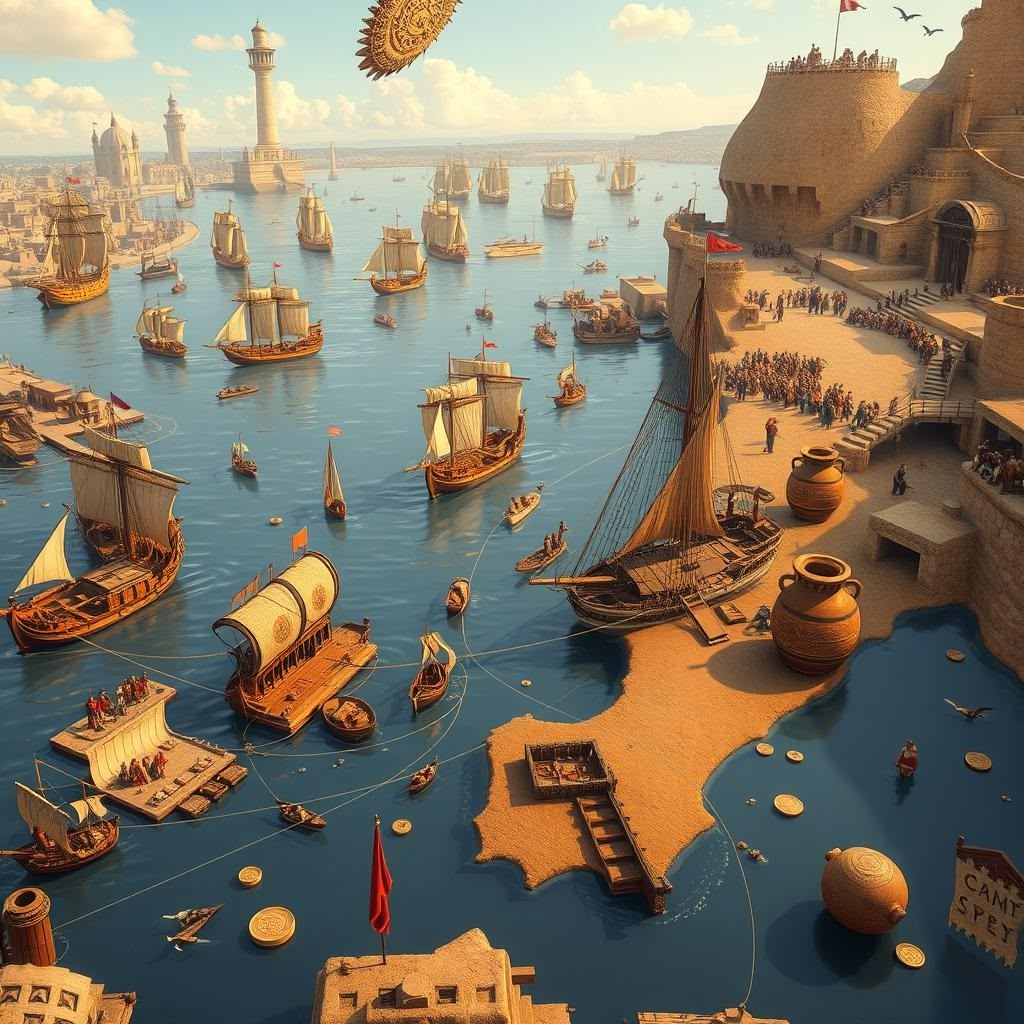
The Roman Market Advantage: Creating Unprecedented Scale
Rome’s greatest commercial innovation wasn’t a product but a concept: the creation of a unified market that operated under standardized rules. This was the ancient equivalent of today’s globalization, but with one crucial difference—it happened under a single governing authority.
The establishment of what economists would now call a “common market” throughout the Mediterranean basin provided Roman merchants with enormous competitive advantages. Consider what this meant in practical terms: a merchant could transport goods from Egypt to Spain without facing different taxation systems, currency exchanges, or regulatory frameworks. This dramatically reduced transaction costs and market friction in ways that wouldn’t be replicated until the formation of modern economic unions.
This standardization extended to critical business infrastructure. Roman roads, harbors, and shipping routes functioned much like today’s global logistics networks, allowing for predictable delivery times and transportation costs. The famous Roman roads weren’t built solely for military purposes—they were commercial highways that reduced delivery times and transportation costs, creating competitive advantages for merchants operating within the Roman system.
Perhaps most significantly, Rome established a remarkable degree of consumer protection and contract enforcement across its territories. Merchants could engage in transactions with reasonable certainty that agreements would be honored and disputes resolved through established legal channels. This reduction in commercial risk encouraged trade volume and entrepreneurial activity at an unprecedented scale.
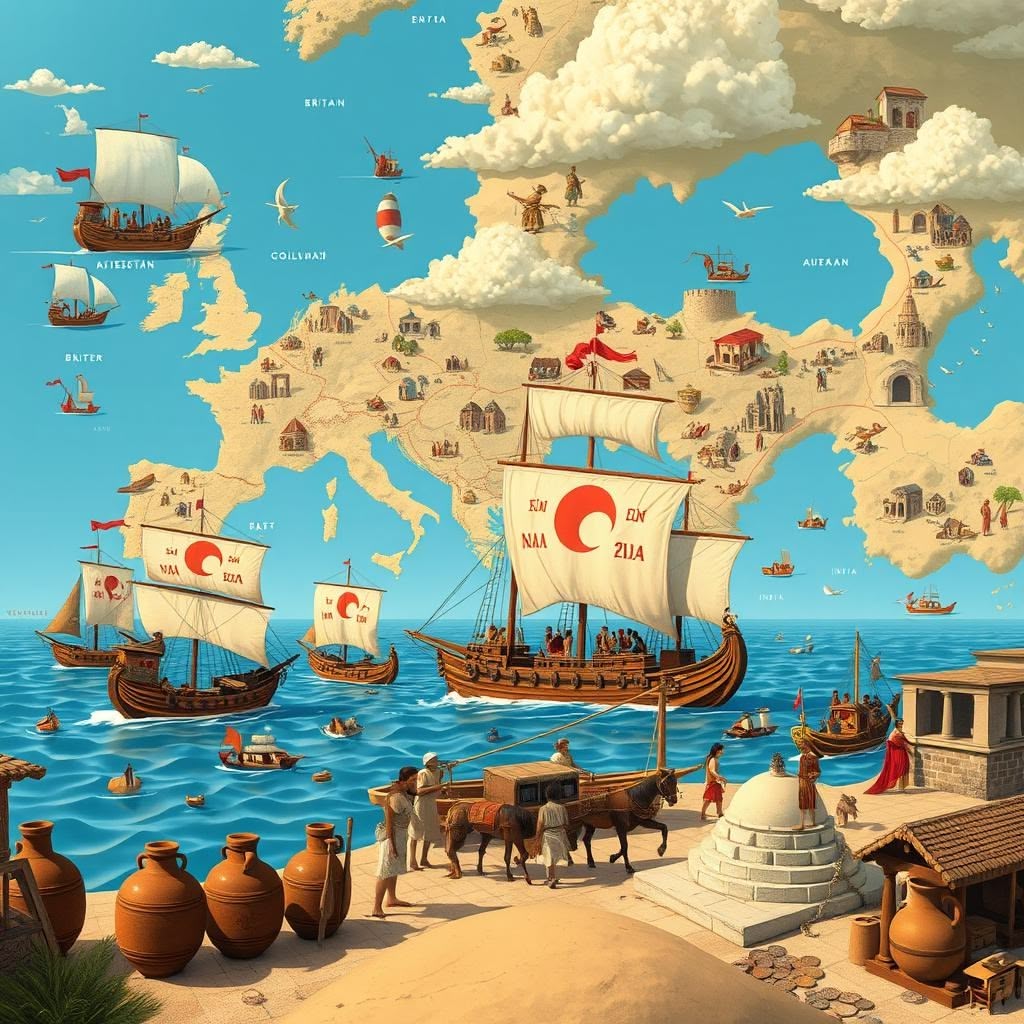
Supply Chain Management: Rome’s Commercial Backbone
The logistics operation that kept Rome’s maritime trade functioning would impress even today’s supply chain experts. Rome developed a hub-and-spoke distribution model centered on major Mediterranean ports, with Ostia (Rome’s primary port) functioning as the ancient equivalent of modern distribution centers like Singapore or Rotterdam.
This network allowed for the movement of staple commodities at a scale that wouldn’t be matched until the Industrial Revolution. The grain supply chain alone represented a logistical achievement of staggering proportions. Feeding the capital city required approximately 300,000 tons of grain annually, most transported by sea from North Africa and Egypt.
Roman merchants created sophisticated inventory management systems to handle these volumes. Warehouses (horrea) dotted the empire’s port cities, functioning as buffer inventory locations that helped mitigate supply disruptions. These facilities operated with surprising efficiency, using documentation systems to track merchandise movements and ownership—an ancient version of today’s warehouse management systems.
What made this supply chain truly remarkable was its resilience. Despite lacking modern technology, Roman logistics managers implemented multiple redundancies and contingency planning. When storms disrupted shipping lanes, alternative routes could be activated. When harvests failed in one region, procurement could shift to others. This operational flexibility protected the empire from severe supply disruptions and created a stable commercial environment that fostered economic growth.
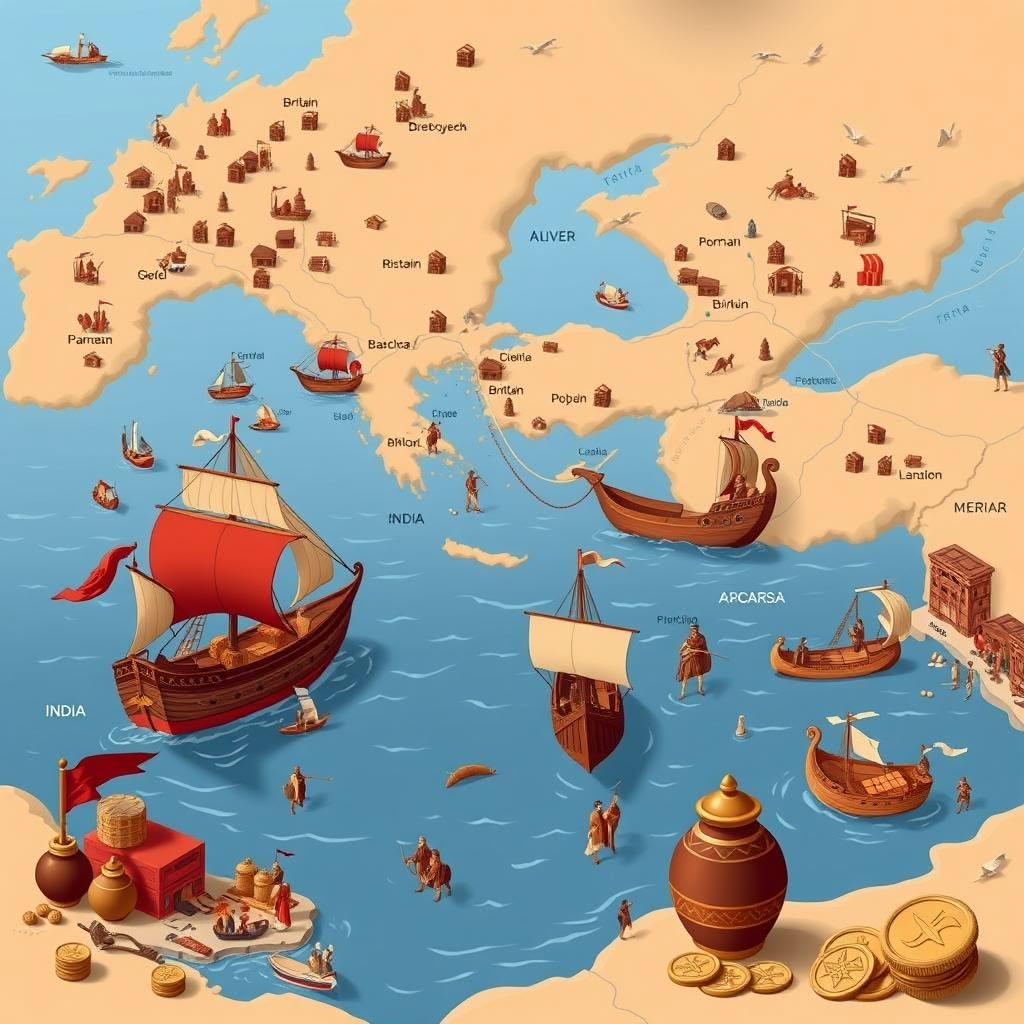
Vertical Integration: The Roman Competitive Strategy
Rome’s approach to business expansion mirrored strategies employed by today’s most successful corporations: vertical integration to control critical supply chain components while leveraging partnerships for non-core activities.
The state maintained direct control over strategic industries like grain production and distribution. This wasn’t merely political expediency—it represented a deliberate business strategy to secure essential supply chains for critical commodities. By owning productive agricultural lands in Egypt and North Africa and managing the transportation infrastructure, Rome could ensure stable prices and supply reliability for staple goods.
For non-essential goods, Rome employed a franchise-like model through private merchants who operated within the empire’s commercial framework. These entrepreneurs received certain protections and market access in exchange for operating according to Roman commercial standards and paying appropriate taxes and fees. This arrangement allowed Rome to benefit from private sector innovation while maintaining strategic control of essential industries—a balance many modern governments still struggle to achieve.
Roman businesses also demonstrated sophisticated understanding of competitive positioning. Merchants specialized in specific trade routes or commodity categories, developing deep expertise that created competitive advantages. Some focused on luxury goods from the East, others on bulk commodities from North Africa, and still others on specialty items like wine or olive oil from particular regions. This specialization created efficiencies through accumulated expertise and relationship networks.
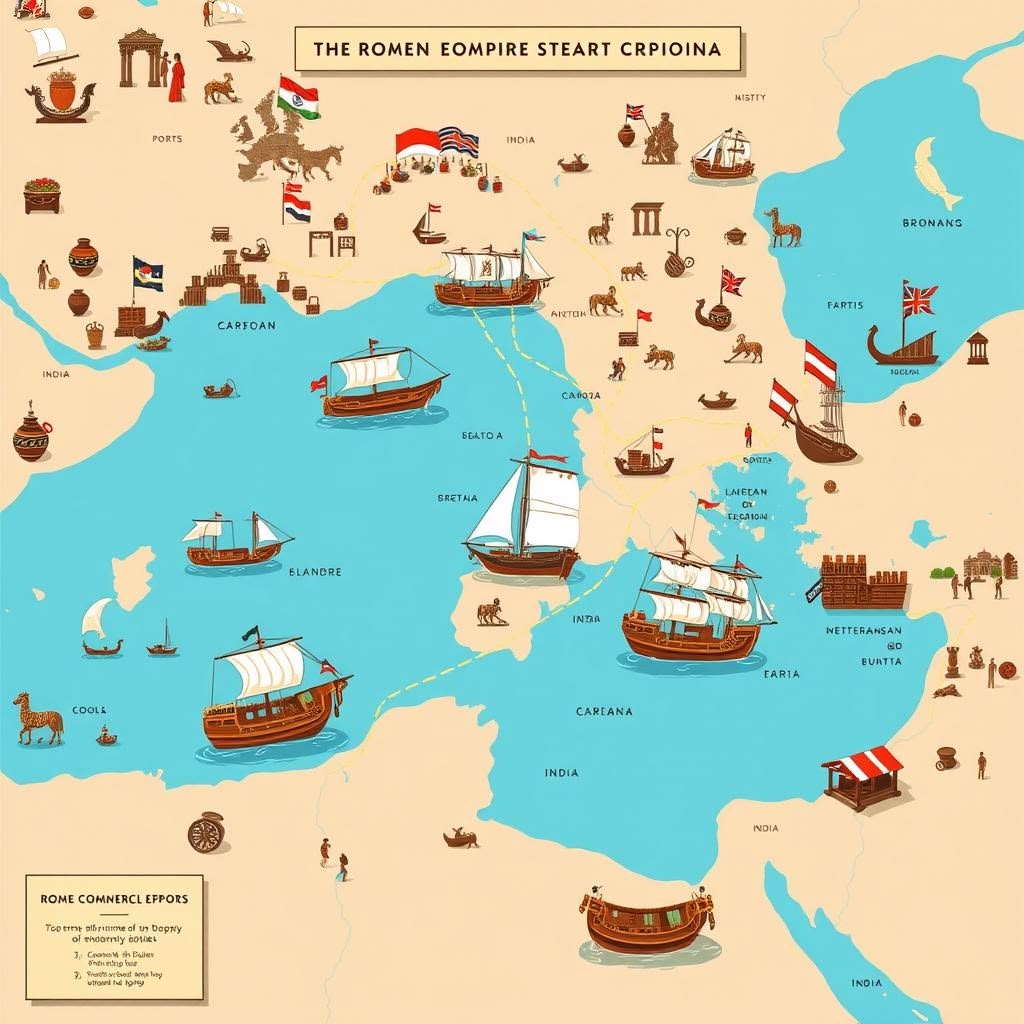
Financial Innovation: Rome’s Commercial Accelerator
The sophisticated financial instruments developed by Roman merchants would be recognizable to today’s financial professionals. These tools emerged from practical necessity: maritime trade required significant capital and involved substantial risk, creating conditions that demanded financial innovation.
Investment partnerships called societas provided the ancient equivalent of modern equity financing. Wealthy individuals could pool capital to fund commercial ventures, sharing both risk and potential profits. These arrangements included clearly defined governance structures specifying how decisions would be made and profits distributed—much like today’s shareholder agreements.
Roman merchants also developed sophisticated insurance mechanisms to manage maritime risk. The nauticum foenus (sea loan) represented an early form of both insurance and investment banking. Under this arrangement, investors would provide capital for shipping ventures at high interest rates, but the loan would be forgiven if the ship was lost at sea. This elegant financial instrument distributed risk while providing necessary capital for maritime commerce.
Banking infrastructure developed to support these commercial activities. Banking houses (argentarii) offered deposit accounts, payment services, and credit facilities. Merchants could transfer funds between cities without physically moving coins, using documentation systems that functioned similarly to modern bank drafts. This financial infrastructure reduced transaction costs and accelerated commercial activity throughout the empire.
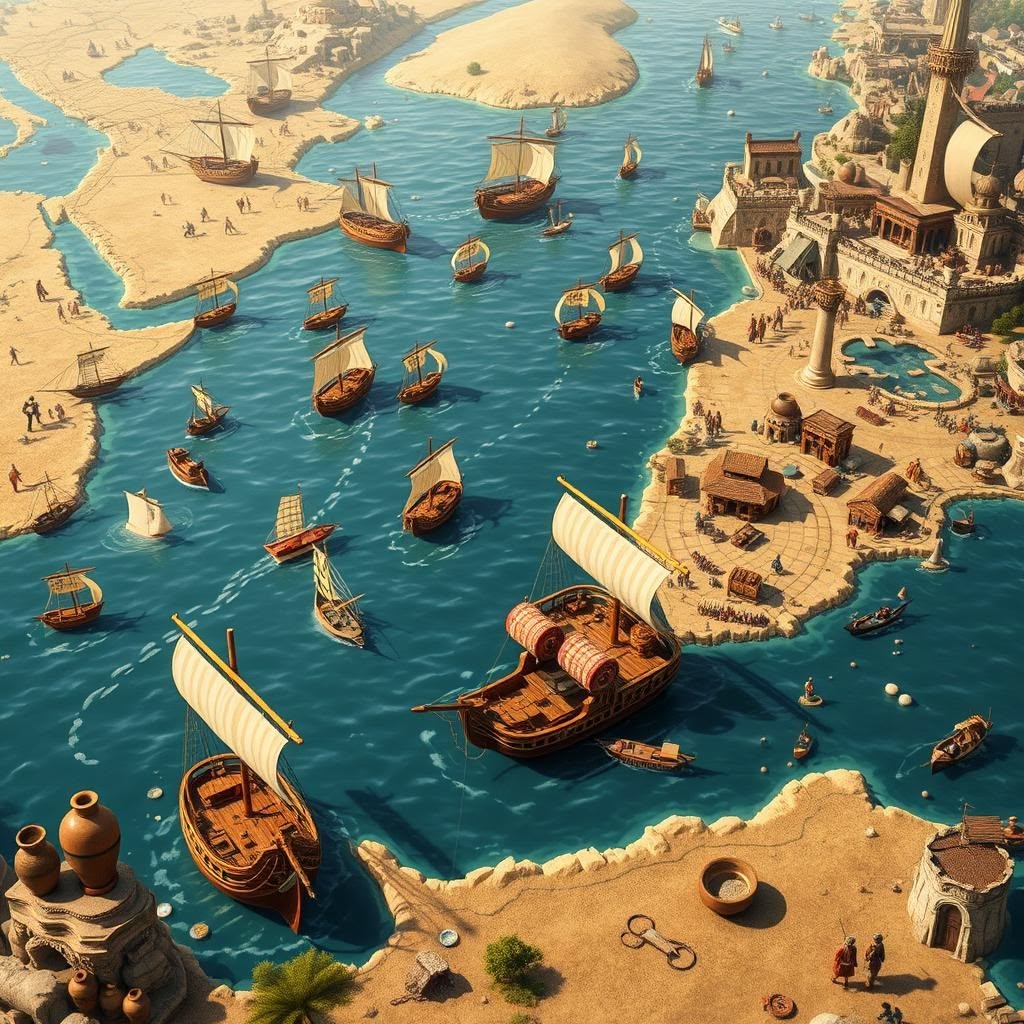
Market Research and Consumer Understanding
Roman merchants demonstrated remarkable understanding of consumer preferences across diverse markets. Archaeological evidence reveals sophisticated product differentiation and market segmentation strategies that mirror modern marketing approaches.
Roman businesses created distinct product variations for different regional markets, adapting offerings to local preferences. Wine merchants, for instance, produced different formulations for various regional tastes, with sweeter varieties for certain markets and drier styles for others. Ceramic producers created different designs and functionalities based on regional cooking practices and aesthetic preferences.
Quality signaling mechanisms emerged to help consumers navigate product choices. Amphora stamps and maker’s marks functioned much like modern brands, communicating origin, producer, and expected quality standards. Premium producers used distinctive packaging and markings to differentiate their goods from lower-quality alternatives, allowing for price differentiation based on perceived quality.
Market intelligence gathering became a systematic business practice. Merchants maintained extensive information networks to track supply conditions, price movements, and consumer trends across distant markets. This intelligence informed inventory management, pricing strategies, and product development decisions. The most successful Roman merchants were those who could accurately anticipate market conditions and position their offerings accordingly—precisely the same dynamic that drives commercial success today.
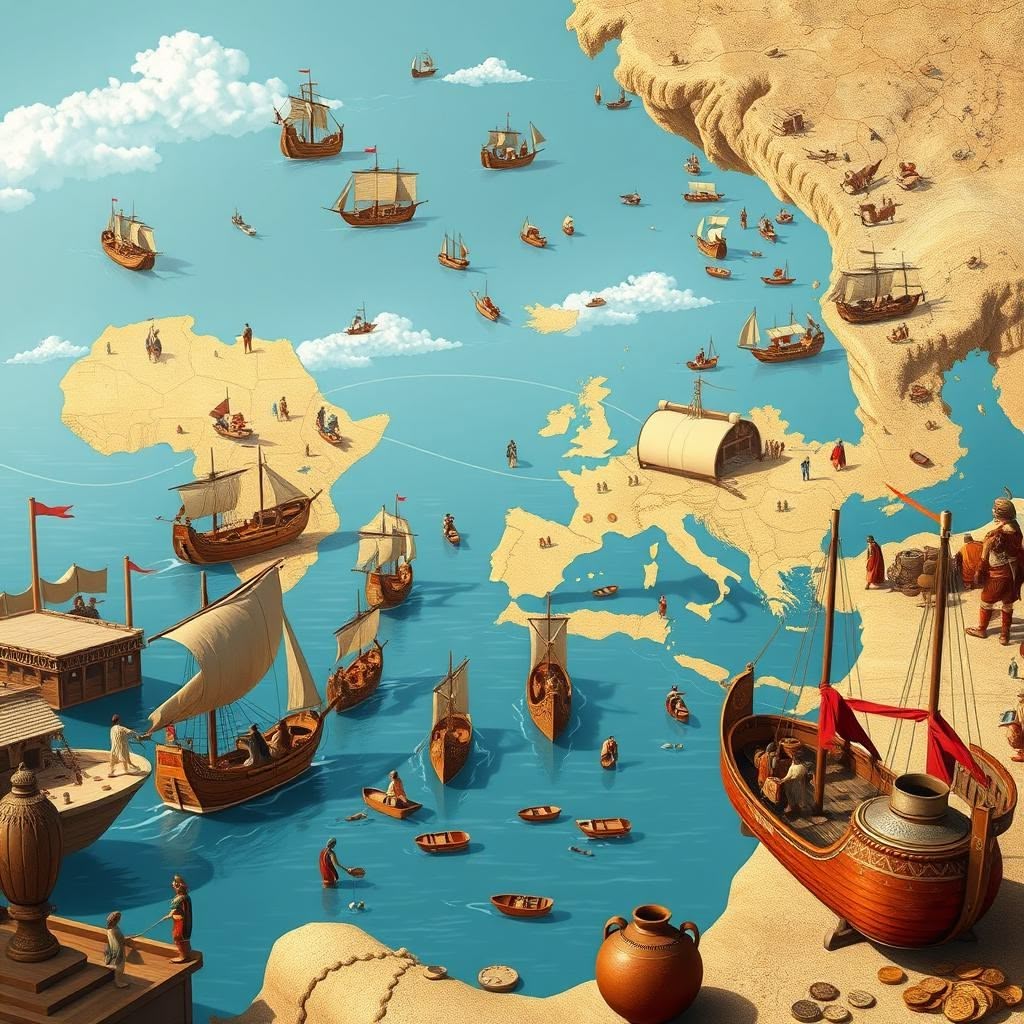
Risk Management: The Roman Way
Maritime trade in the ancient world involved substantial risks, from storms and piracy to market fluctuations and political instability. Roman merchants developed sophisticated risk management strategies that continue to influence modern business practices.
Diversification represented the cornerstone of Roman risk management. Wealthy merchants rarely committed their entire capital to a single venture. Instead, they distributed investments across multiple ships, routes, and commodity types. This portfolio approach limited exposure to any single risk factor and created more stable returns over time—the same principle that guides modern investment strategies.
Seasonal planning provided another risk mitigation technique. Mediterranean sailing followed predictable seasonal patterns, with most maritime activity concentrated during the mare apertum (open sea) period from spring to fall. This scheduling reduced weather-related risks while creating predictable business cycles that merchants could incorporate into their planning.
Information management became a competitive advantage in risk mitigation. Successful merchants maintained extensive networks of contacts across port cities, providing early intelligence about market conditions, political developments, and potential disruptions. This information asymmetry allowed them to adjust strategies more quickly than less-connected competitors—a principle that remains valid in today’s business environment.
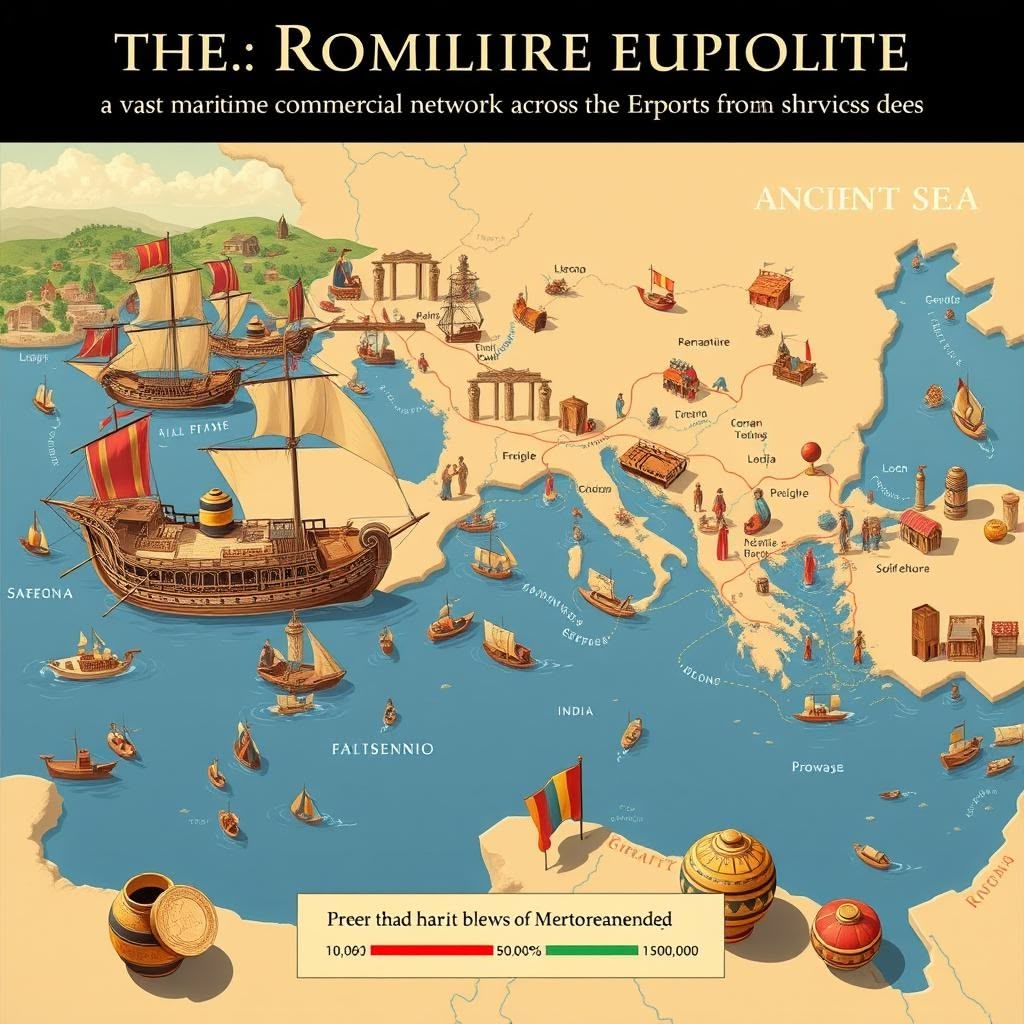
Expansion Strategies: Rome’s Market Development Model
Rome’s approach to market expansion followed a remarkably consistent pattern that modern businesses would recognize as a deliberate market development strategy. This wasn’t merely the byproduct of conquest—it represented a systematic commercial approach to establishing new markets and trade routes.
The typical Roman market expansion sequence began with military stabilization to create secure conditions for commerce. This was followed by infrastructure development, including roads, harbors, and market facilities. Legal and monetary standardization would establish predictable commercial rules. Finally, incentives for merchants and settlers would accelerate commercial development in the new territory.
This pattern created a virtuous cycle where initial commercial success generated tax revenue that funded further infrastructure development, which in turn supported additional commercial growth. The brilliance of this system was its self-reinforcing nature—commerce funded the very infrastructure and security that enabled more commerce.
Roman expansion also demonstrated sophisticated understanding of network effects. Each new territory added to the empire didn’t just represent an incremental addition but enhanced the value of the entire network by creating new market connections and trade route possibilities. This multiplicative effect of network expansion mirrors the growth strategies of modern platform businesses like Amazon or Alibaba.
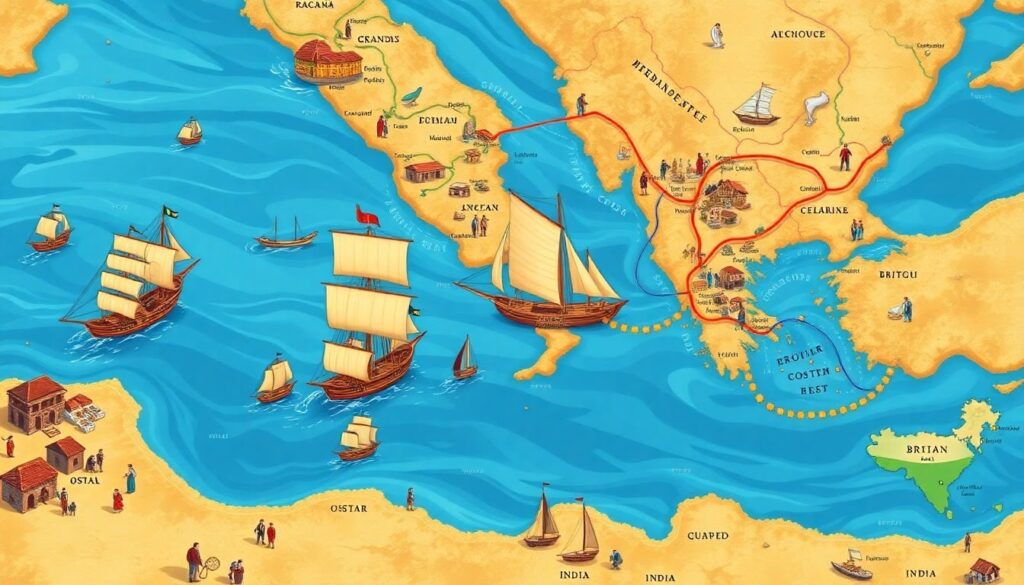
Human Capital: The Overlooked Roman Business Innovation
Rome’s approach to human capital management represented perhaps its most progressive business innovation. The empire created unprecedented social mobility pathways through commerce, allowing individuals of modest origins to achieve significant wealth and status through business success.
The Roman commercial system leveraged diverse talents from throughout the empire. Greek merchants brought sophisticated financial techniques, Egyptian farmers contributed agricultural expertise, and Spanish miners brought extraction knowledge. This integration of diverse capabilities created a knowledge transfer system that accelerated innovation and improved commercial practices.
Knowledge transmission became institutionalized through apprenticeship systems and commercial families. Young merchants learned through direct participation in business activities under the guidance of experienced practitioners. Commercial knowledge passed through family lines, with business practices and relationship networks carefully preserved and expanded across generations.
Perhaps most significantly, the Romans created advancement pathways for formerly enslaved individuals through commerce. The practice of manumission (freeing slaves) combined with opportunities for freedmen to engage in business created a meritocratic element within the Roman commercial system. Many of Rome’s most successful merchants began their careers as enslaved individuals, gained freedom, and built commercial empires through talent and determination—creating a social mobility mechanism that rewarded commercial ability.
The Decline: Business Lessons from Rome’s Commercial Contraction
Rome’s commercial decline offers as many business lessons as its rise. The contraction of Rome’s maritime trade network during the later imperial period demonstrates how even the most sophisticated business systems can unravel when fundamental conditions change.
Security costs began to consume an unsustainable portion of commercial profits as the empire’s military position weakened. Rising protection expenses functioned essentially as a tax on commerce, reducing profitability and investment incentives. This created a negative feedback loop where reduced commercial activity generated less tax revenue, further constraining security resources.
Monetary instability introduced unprecedented uncertainty into commercial calculations. Currency debasement and inflation made long-term contracts difficult to value and enforce. Price controls implemented as anti-inflation measures distorted market signals and created shortages. These monetary and regulatory failures undermined the predictable commercial environment that had facilitated Rome’s earlier commercial success.
Most importantly, the Roman commercial system eventually succumbed to bureaucratic sclerosis. As the state assumed more direct control over commercial activities, the entrepreneurial energy that had characterized earlier periods diminished. Increased regulation and state intervention reduced adaptability precisely when changing conditions demanded more flexibility.
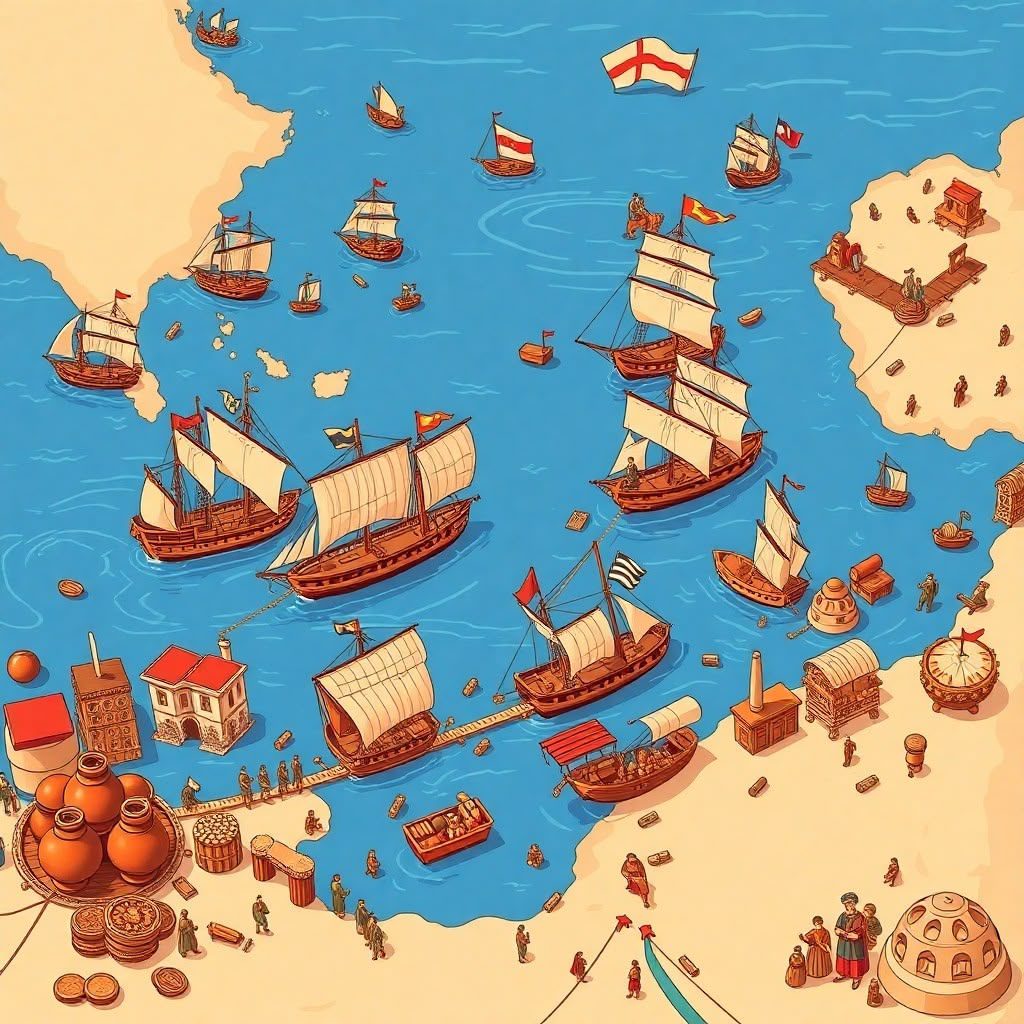
Timeless Business Lessons from Rome’s Maritime Empire
The business model that powered Rome’s maritime trade empire offers enduring insights for modern organizations. Their commercial innovations weren’t just remarkable for their time—they established foundational principles that continue to drive business success today.
Rome demonstrated that standardized systems create powerful commercial advantages. By establishing consistent legal frameworks, infrastructure, and currency across diverse territories, Rome reduced transaction costs and market friction. This standardization lesson remains relevant for modern businesses operating across multiple jurisdictions and markets.
The Romans understood that physical infrastructure and financial systems must develop in tandem. Their simultaneous investments in ports, roads, warehouses, and banking services created a comprehensive commercial ecosystem. This integrated approach to infrastructure development offers a model for emerging economies seeking to accelerate commercial development.
Perhaps most importantly, Rome’s commercial history demonstrates that sustainable business empires are built on positive-sum relationships. At its height, Roman commerce created value for multiple stakeholders—merchants gained wealth, consumers accessed desired goods, producers found reliable markets, and the state collected tax revenue. This alignment of interests created a commercial system that participants sought to maintain rather than undermine.
The sophisticated business model behind Rome’s maritime trade empire deserves recognition alongside its military and architectural achievements. By applying modern business analysis to this ancient commercial system, we gain not just historical perspective but practical insights that remain remarkably relevant to contemporary business challenges. Rome’s greatest legacy may not be its monuments or conquests, but the commercial blueprint it created for organizing human economic activity at scale—a blueprint that continues to influence global commerce nearly two millennia after the last Roman ship sailed.

